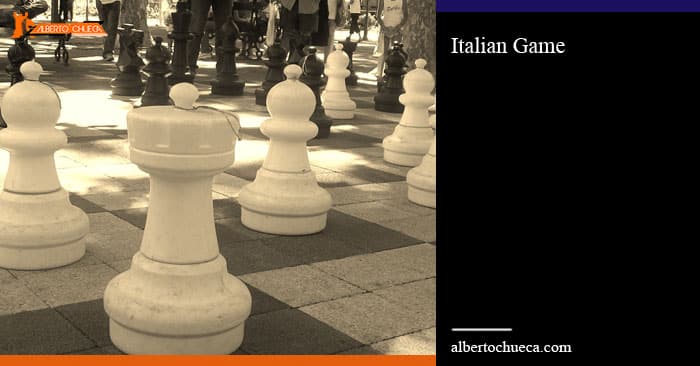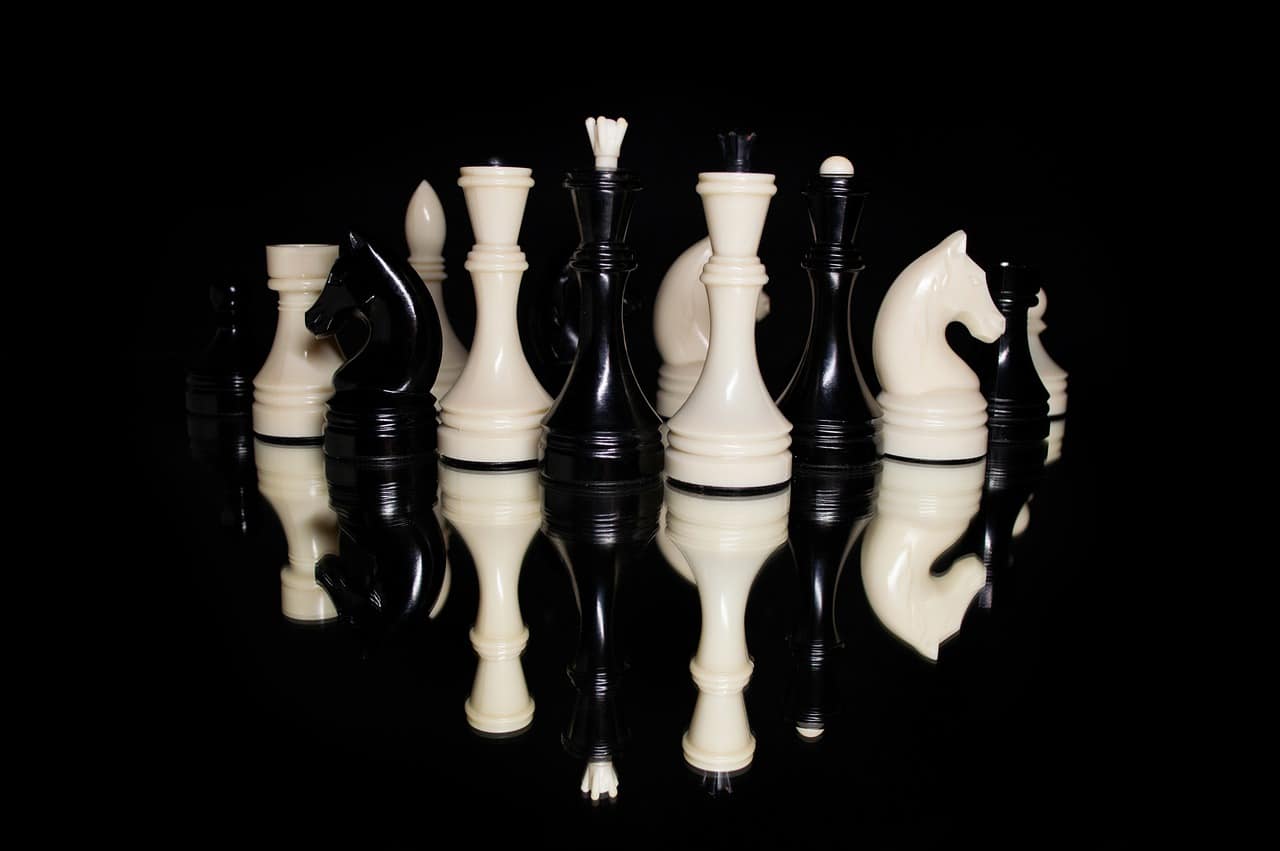Table of Contents
Italian Game
Italian Game is a strong, interesting, and easy to play and learn Opening for White. That is why it is very often recommended for beginners. At the same time, great masters play it very frequently in the Elite. In this post, we will analyze some theory, main plans, pawn structures, and typical squares for pieces.
1.e4 e5 2Nf3 Nc6 3.Bc4
This is the basic position, White’s light squares Bishop is developed to c4, which is a very active square, targeting f7.
Some theory and ideas
At this point, Black has two main options:
- 3. … Nf6 Two Knights Defense
This development move has the drawback that blocks the black Queen, so White has the possibility to play very aggressively with 4.Ng5.
The line should continue like this:
- … d5 5. exd5 Na5 6. Bb5+
White will have a pawn up in the middlegame, but in general Black could have some acceptable compensation for it.
- 3. … Bc5 Giuoco Piano
This move is probably a little easier to play for Black. Notice that now White cannot play Ng5, because the Queen is controlling that square.
Here White can play the interesting Evans Gambit 4. b4!?, but actually the mainline continues with 4. c3 (this move is very strong, it is dominating black Knight so it cannot jump ahead, and also preparing some d4).
4. … Nf6
And here two interesting options (one more time the annoying 5.Ng5 does not make sense, because Black can just castle and protect f7 with King and Rook):
- 5.d4 exd4 6. cxd4 (6.e5 is also possible, although probably not better than cxd4) Bb4+ 7. Bd2 (7.Nc3 is also playable, with a middlegame a little more complicated)
- 5.d3 Giuoco Pianissimo, this is the mainline we will focus on.
Giuoco Pianissimo means very slow, which is exactly what should happen in the middlegame because both sides will slowly maneuver and try to improve their pieces. This is one of the main lines:
- … d6 6.0-0 0-0 7.Nbd2 a6 (typical move, clearing a7 for the Bishop)
8.Bb3 Black was threatening some ideas with Na5, and white Bishop cannot escape now to b5, which means that the powerful light squares Bishop could be traded for the Knight. That is why in general, White needs to play Bb3 after a6. This is an important subtlety in this system.
Typical Pawn Structures in Italian Game
White: a2, b2, c3, d3, e3, e4, g2, h3
Black: a6, b7, c7, d6, e5, f7, g7, h6
This happens very often, because of the trade of bishops on e3. One of the main worries for beginners playing as White in this typical pawn structure in Italian Game is the doubled pawns on the “e” file. However, I have great news here :), there is nothing wrong with them.
This small problem is perfectly compensated because White is getting a very strong control of central squares (the pawn on e3 now controls d4 and f4, which is great) and also the “f” file is now half-open, so the Rook on f1 is much more active.
Typical Plans
In Giuoco Pianissimo, White needs to solve the problem of the development of the Queenside Knight, because “c3” square is now blocked by the pawn and on d2 the Knight will be also blocking the Bishop. So, a very common plan is to bring this Knight to the Kingside, by playing Nd2-f1-g3. Sometimes also e3 is fine, thinking about some possibilities over d5 or c4.
The plans are very slow here, but the position is actually interesting. White could try some advance over d4 once all pieces are ready for this break. Also, the “f5” square is always going to be very comfortable for white Knights, so, ideas like Nh4-f5 are also fine here.
By the way, White needs to be careful when they play Nh4 because this piece will be unprotected, so, there could be some tactic idea related to that Knight, as a capture on e4 (Nxe4) discovering the black Queen. In general, the move Nh4 will work, but it is important not to forget to think about possible tactics from the second player because in some positions it could be winning material for Black.
We should say that a very strong plan for Black is to bring the Queenside Knight to the Kingside. Remember this Knight is dominated by the white pawn on c3, so the maneuver Nc6-e7-g6 is pretty interesting. Sometimes this Knight could also jump to f4.
Typical squares for white pieces in Italian Game
King: It takes some moves to develop pieces in the Queenside, so, almost always White castles Kingside.
Queen: A typical square for the Queen in this line is e2. The idea is to clear d1 for the Rook, and also move the Queen out of the “d” file, which is very likely to be open at some point in the middlegame when Black plays d5 or White plays d4, which are both typical breaks in these positions.
Rooks: The Queenside Rook frequently goes to d1. The one from the Kingside could go to e1, protecting the central pawn. However, if there is a minor piece trade on e3, and the “f” file is finally half-open, then this piece is clearly better on f1.
Bishops: Light squares Bishop very often goes back to b3, avoiding to be traded by a Knight. If there is some threat, this piece can also go to c2, where it is really safe, it protects the center, and it is ready to target h7 if the diagonal is finally open. The dark squares Bishop goes almost always to e3, where it can be perfectly traded by the annoying black Bishop. We are assuming Black plays h6 at some point; otherwise, the pin with Bg5 could be really annoying for the second player.
Knights: The Kingside Knight can go from f3 to h4-f5. The Queenside Knight will use the path d2-f1-g3 or e3, also looking at f5, d5, or c4. Sometimes White can even do this plan of Nf1-e3 or g3 before castling and it is fine as well.








